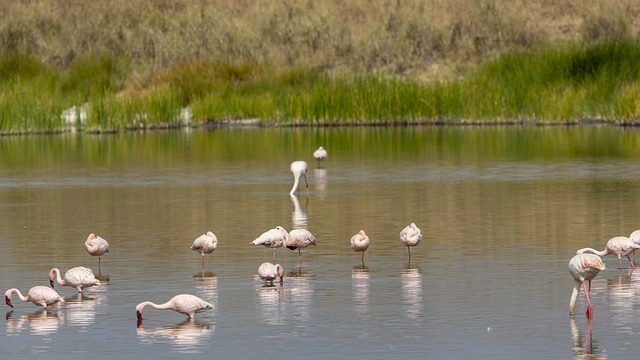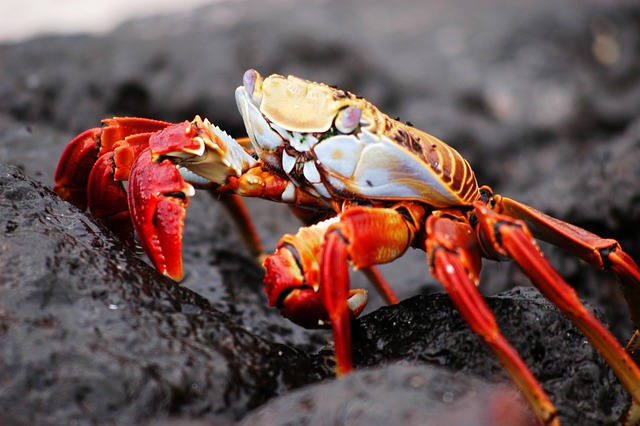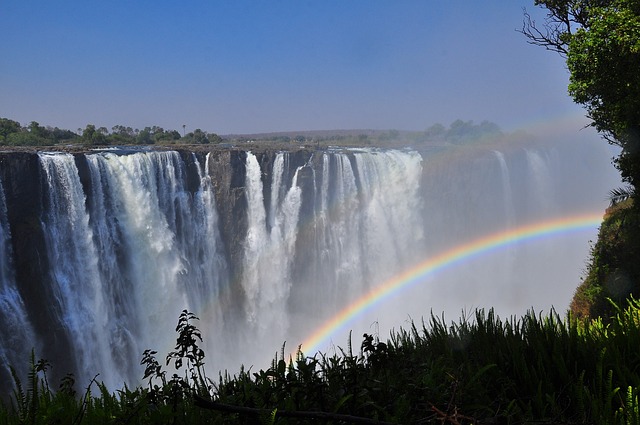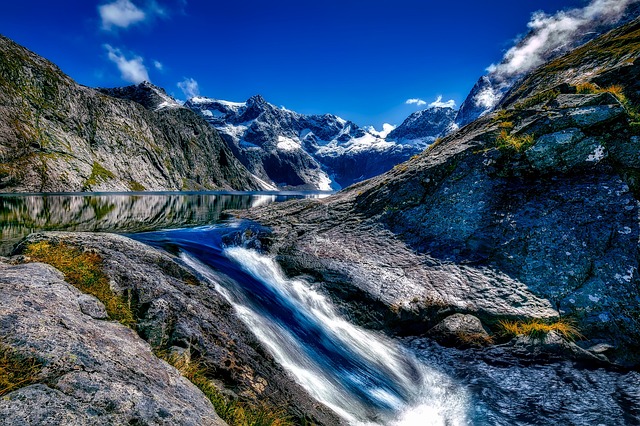Serengeti National Park: Where the Wild Things Strut Their Stuff!
Serengeti National Park is an ecological marvel nestled in the heart of Tanzania, Africa. Spanning over an expansive 14,763 square kilometers, this park is a testament to the raw and untamed beauty of the wilderness. Protected as a World Heritage Site, the Serengeti boasts vast plains where wildlife events, most famously the annual wildebeest migration, unfold in a drama that rivals any blockbuster.

In this haven of biodiversity, it’s not just about the big and the hairy. From the tiniest dung beetle to the proud elephants, every creature plays a starring role in the Serengeti’s intricate ecological production. With landscapes that seem to have shrugged off the passage of time, visitors may feel like they’ve walked onto the set of the greatest nature documentary ever filmed. Yet, while the park remains a symbol of conservation success, it’s not immune to the plot twists of environmental challenges and the quest for harmonious coexistence between man and nature.
Key Takeaways
- Serengeti National Park is a vast and biodiverse ecosystem in Tanzania, recognized as a World Heritage Site.
- The park is renowned for spectacular wildlife events, including the annual wildebeest migration.
- Conservation efforts are key to preserving the Serengeti, despite ongoing environmental and human-animal conflict challenges.
The Circle of Life and Annual Events

In the Serengeti, not a single zebra or wildebeest can hit the snooze button—nature’s cycle waits for no one. Here, every creature is either on the move, on the hunt, or on the menu.
The Great Migration Marvel
Each year, the Serengeti stage shines the spotlight on the Great Migration, a thunderous procession starring over two million wildebeests, zebras, and gazelles. This mass movement is not just a leisurely stroll across the plains; it’s a survival gauntlet replete with river crossings where the waters roil with cunning crocodiles. Escaping these toothy hazards is like navigating through a game of Hungry Hungry Hippos, only far less whimsical.
Key Players:
- Lead Actors: Wildebeest herds
- Supporting Roles: Zebra and gazelle contingents
- Antagonists: Lions, cheetahs, leopards, and spotted hyenas
- Cameos: Crocodiles in rivers and various birds
Seasons and Climate Patterns
The Serengeti doesn’t really do monotonous weather; it’s got a wardrobe of climates and it changes them faster than a chameleon does colors. The dry season has everyone gossiping at the waterholes, making it prime time for predator sneak attacks. Then come the rains, turning the Serengeti into an all-you-can-eat buffet for herbivores with a fresh spread of grasslands, thus setting the stage for the next roving performance of the Great Migration.
Seasons:
- Dry Season: May to October, wildlife watercooler sessions increase
- Wet Season: November to April, greenery galore and calving season
Surviving the Savannah: Predator and Prey Dynamics
Imagine the savanna as one large, high-stakes reality show where the lion population acts like the royal family, the cheetahs are the sprinters always rushing off somewhere in a blur, and the leopards are the stealthy loners preferring to take their meals in trees. The spotted hyenas, well, they’re the unruly neighbors, laughing at everyone’s expense. Elephants and giraffes maintain a dignified presence amid this drama, often looking like they’re above such frivolous pursuits—which, given their height, isn’t just a metaphor.
Predators’ Dinner Menu:
- Appetizer: Unwary gazelles
- Main Course: Straggling wildebeest
- Dessert: The occasional zebra tartare
- No-Show: Elephants and giraffes (too big for the plate)
Conservation and Challenges

Serengeti National Park, a land where wildlife roams free, is engaged in an epic plot twist of conservation and survival. Within this stage, the park’s array of characters, including the stealthy leopard and the speedy cheetah, play out their roles while facing an array of daunting challenges.
Fighting for Survival: Poaching and Anti-Poaching
They say an elephant never forgets, but in Serengeti, they’d love to forget about poaching. The tusker’s tusks and the black rhino’s horn have turned them into the unwilling stars of a dangerous game. But fear not, anti-poaching rangers are the park’s unsung heroes, wielding not superhero capes but GPS trackers and patrol vehicles. Their mission: protect the park’s endemic species and curb the illegal wildlife trade.
- Primary Threats: Poaching for bushmeat, ivory, and horns.
- Anti-Poaching Brigade: Rangers, surveillance technology, and collaborative patrols.
Efforts are amped up to shield the likes of wild dogs and spotted hyenas from becoming the next poaching statistics.
Conservation Efforts and Park Management
The Serengeti’s ground-pawing cheetahs and tree-climbing leopards may not care much for paperwork, but they benefit from the park’s robust conservation management plans. Transitioning from ambition to practical action, park management involves a heady mix of science, community collaboration, and a dash of wildlife intuition.
Key Focus Areas:
- Habitat Protection: Maintaining the Serengeti’s pristine landscapes and migration corridors.
- Community Outreach: Reducing human-wildlife conflict around the Ngorongoro Conservation Area.
- Health Monitoring: Keeping diseases like rabies at bay through vaccination programs.
And when Kenya whispers ‘conservation’, Tanzania’s Serengeti nods, maintaining cross-border efforts to sustain a thriller of a wilderness for generations to come.
Exploring the Serengeti

Embarking on a journey through the Serengeti National Park is like flipping through the best highlights of an African safari brochure. With creatures that don’t bother with crosswalks and landscapes that laugh in the face of photo filters, visitors are in for a real treat.
Wildlife Safaris: Not Just a Walk in the Park
They say it’s not the destination, but the journey that counts, and boy, what a journey it is! A safari here is a VIP pass to see the stars of the savannah. Picture groups of cheeky gazelles playing tag and top-billed wildebeests performing their annual migratory marathon. The Grumeti River surely offers high-stakes crocodile wrestling, and if you’re lucky, you might spot an elusive pack of wild dogs, the park’s most secretive celebrities.
- Most Exclusive Events:
- The Great Migration: Wildebeest, Gazelles, Zebra (seasonal)
- Big Cat Diary Live: Lion, Cheetah, Leopard
- Grumeti River: Crocodiles, Hippos
- Woodlands and Riverine Forest: Birdwatching Galore
Where to Stay: From Camps to Lodges
Whether one prefers to slumber under the stars in a luxurious canvas palace or to sleep with a sturdy roof at a lodge, the Serengeti offers the dreamiest of accommodations. Camps provide that raw, unedited experience where one can enjoy the ‘buzz’ of nature (it’s literally the buzz; insects are part of the deal). Lodges, on the other hand, bring the finer things to the wild, like beds that don’t deflate and showers that don’t involve a bucket.
- Accommodation Options:
- Canvas Camps: Close to nature, Acacia views, Maasai performances
- Lodges: Solid walls, fine dining, maybe even a spa treat
Beyond Borders: The Serengeti-Kenya Connection
The Serengeti doesn’t play by pesky human border rules. It spills over into Kenya, joining paws with the Maasai Mara National Reserve, creating a superpark where animals can roam freely. This cross-border collaboration features an extended runway for the Great Migration. Ever heard of a zebra with a travel visa? Of course not, because these stripey travelers are worldly wanderers, ignoring that pesky Kenyan Border. It’s a wild, open space where Maasai traditions meet unbridled wildlife adventures.







